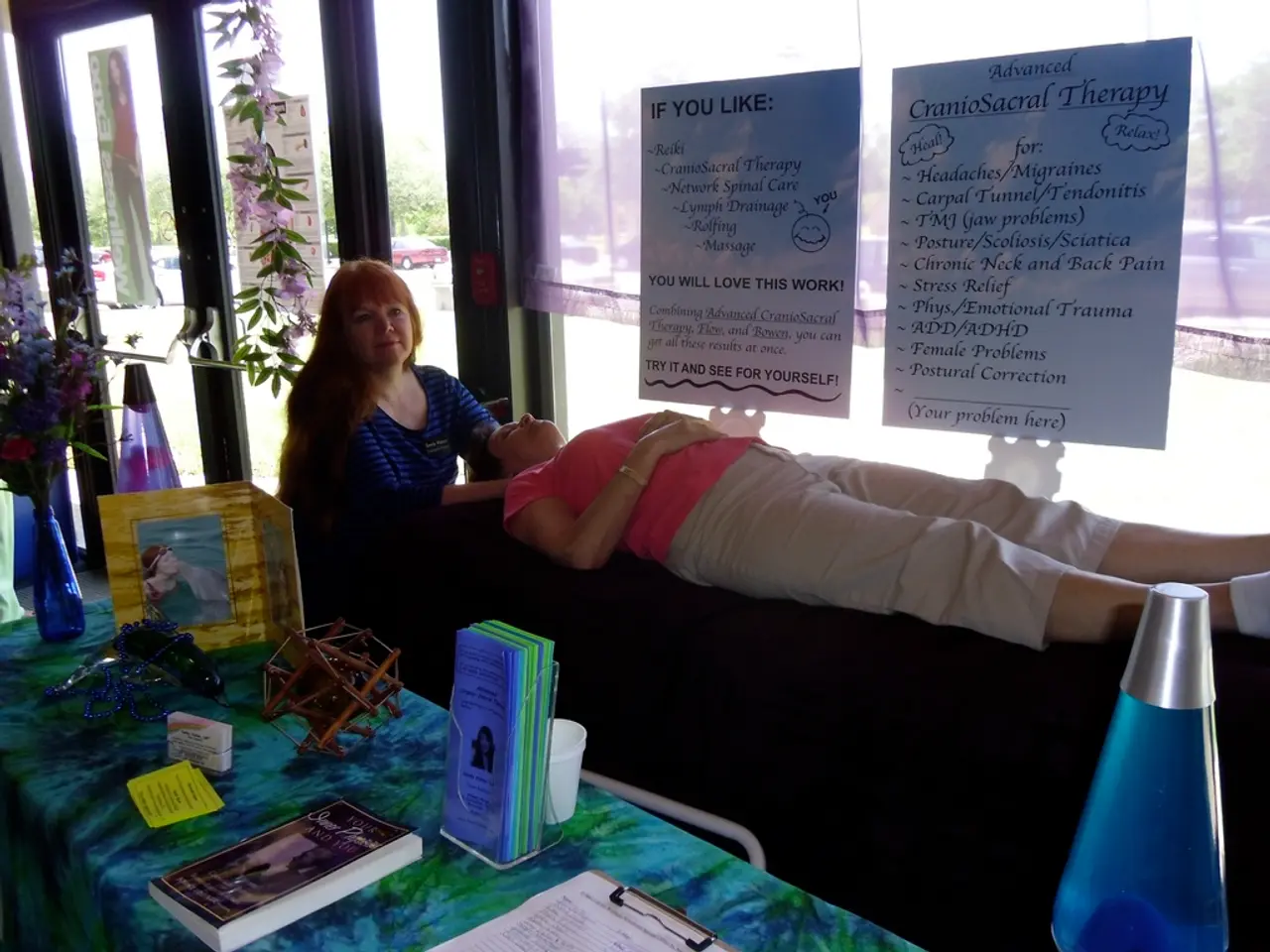Identifying Depression Indicators: Understanding Symptoms and Follow-up Actions
Depression, a common and often debilitating mental health disorder, is characterised by feelings of persistent sadness, emptiness, and hopelessness. This condition can feel like an all-consuming weight, making even the simplest daily activities seem pointless or not worth the effort.
The symptoms of depression can be deadly, with individuals at a higher risk of having suicidal thoughts or attempting suicide. The emotional toll of depression can be immense, as one survivor described feeling like "every single step was like carrying weights and bricks on my shoulders."[1]
Depression doesn't just affect an individual's emotional state; it can also impact cognitive functions such as concentration, memory, and decision-making. It's not uncommon for those experiencing depression to struggle with difficulty concentrating, making decisions, or remembering things.
If you find yourself experiencing symptoms of depression for two weeks or longer that interfere with daily functioning, it's crucial to seek professional help. These symptoms might include persistent feelings of sadness, emptiness, or hopelessness most days, significant changes in appetite or unintentional weight loss/gain (5% of body weight in a month), sleep disturbances, difficulty concentrating, making decisions, or remembering things, loss of interest in activities you previously enjoyed, increased irritability, restlessness, or feeling slowed down, excessive guilt or feelings of worthlessness, fatigue or loss of energy nearly every day.[2]
Fortunately, depression is highly treatable, especially with early intervention. A variety of treatment options are available, including talk therapy, medication, transcranial magnetic stimulation (TMS), electroconvulsive therapy (ECT), and esketamine (a prescription version of ketamine named Spravato).[3]
Depression can significantly impact multiple areas of someone's life, including their social life, romantic life, productivity, self-esteem, weight, and energy levels. For instance, a person might isolate themselves from loved ones, struggle with self-care, or experience changes in sleep habits, eating patterns, and sexual activity.[4]
Real-life, personal accounts of depression commonly describe it as a heavy, overwhelming burden that makes even simple daily activities feel like immense effort. Depression can feel like "walking through knee-deep water," where systems for coping no longer work, forcing individuals to confront a profound sense of exhaustion and loss of drive.[1]
It's important to note that depression can manifest differently in various groups. For example, children with depression may express irritability rather than sadness, and their symptoms may include a drop in grades at school, separation anxiety or clinginess, refusal to go to school, worry and anxiety, body aches and pains.[5]
Women are nearly twice as likely to be diagnosed with depression and are uniquely susceptible to conditions such as premenstrual dysphoric disorder, perinatal depression, and perimenopausal depression. Older adults and the elderly may exhibit memory difficulties in addition to a melancholy mood and psychomotor disturbances, which can sometimes be mistaken for dementia (pseudodementia).[6]
Men with depression may be more reluctant to talk about their feelings of sadness due to perceived gender roles, often causing them to downplay their symptoms or resist professional treatment. Their depression symptoms may include increased irritability, frustration over minor matters, or angry outbursts, escapist behavior, physical complaints, risky or reckless behavior, and alcohol or drug use.[7]
In severe cases, depression can include hallucinations or delusions, complete inaction (stupor or catatonia), reckless behavior, and suicidal thoughts or plans.[8]
To receive a diagnosis of major depressive disorder, you must meet specific requirements outlined in the DSM-5, including experiencing at least five of the listed symptoms for at least two weeks.[9]
Emotions might swing between feeling completely numb and feeling overwhelmed by hopelessness-often with no clear reason for these low moods. Depression symptoms can range from mild to severe, based on someone's degree of functioning. Mild depression requires extra effort to maintain functioning, moderate depression noticeably affects multiple areas of life, and severe depression requires support from others to seek treatment.[10]
Depression is a mood disorder that affects both mind and body, impacting not just an individual's emotional state but also their physical health and daily functioning. If you or someone you know is experiencing symptoms of depression, remember that help is available, and recovery is possible.






